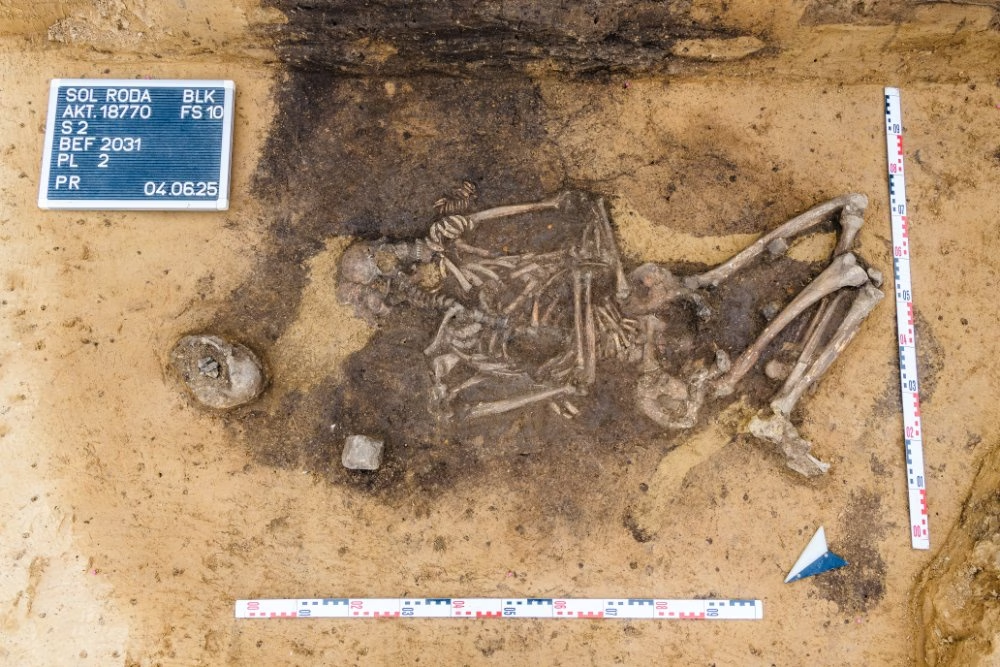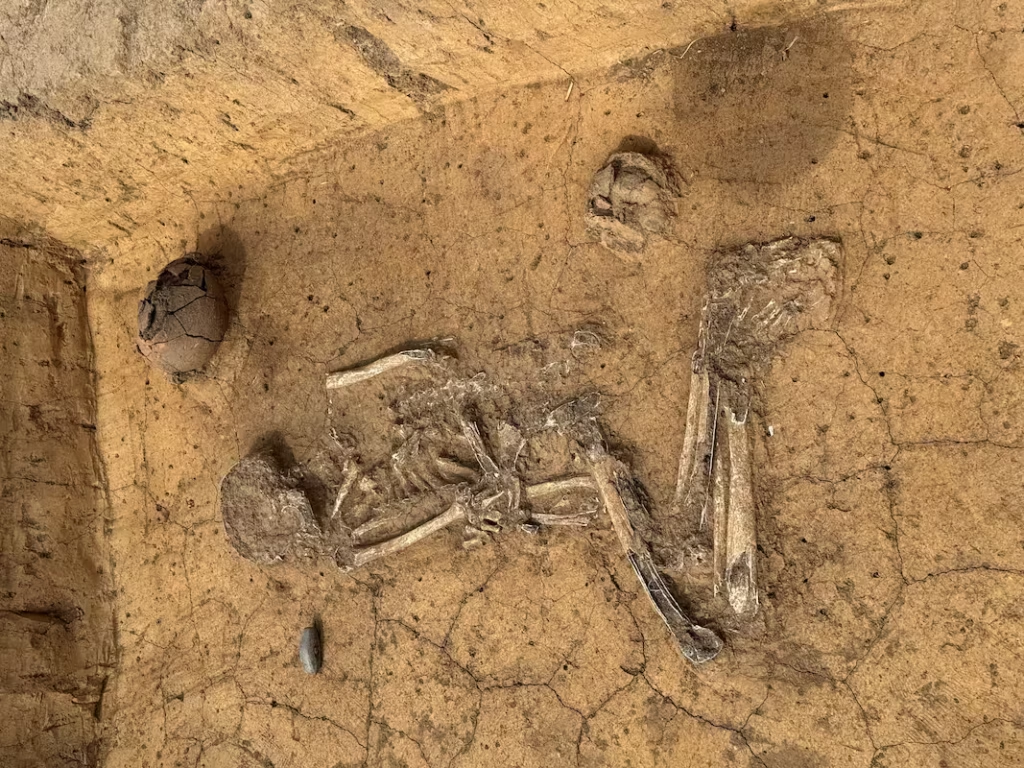Archaeological excavations near the village of Krauschwitz in Saxony-Anhalt, Germany, have brought to light rare, decorated leather bags dating back to the Neolithic era. These remarkable finds were discovered buried alongside women and infants, offering new insights into ancient funerary practices.
As part of the SuedOstLink high-voltage powerline project, archaeologists uncovered these exceptional artifacts in Corded Ware (ca. 2800–2200 BCE) culture graves. Particularly striking were the ornate bags found in the tombs of young women, believed to be elite individuals of their time.
Up to 350 Dog Teeth Adorned Each Handcrafted Bag
Although the organic material of the bags has long since decayed, their presence is marked by the hundreds of carefully drilled dog teeth that once adorned their surfaces. Arranged like roof shingles across the front, the teeth were meticulously sewn onto bags estimated to measure around 30 by 20 centimeters.
Experts believe these bags were far more than decorative accessories. They served as status symbols and possibly represented personal identity within the Corded Ware community. Their craftsmanship and rarity suggest that they were exclusive items reserved for high-ranking women. Approximately 20% of female graves in Krauschwitz and nearby Nessa contained similar finds.

Infant Remains Inside: Were These Ancient Baby Carriers?
One of the most striking aspects of the discovery is the presence of infant bones inside or adjacent to some of the bags. This has led archaeologists to theorize that these items may have functioned as baby carriers or cradle bags.
The bags were typically found in front of the deceased’s body, supporting the theory that they were worn across the chest. Additional textiles found in the graves—such as decorated sashes or scarves, also adorned with teeth—might have been used to protect the infant’s head and limbs. This indicates a dual function: both ceremonial and practical, combining maternal care with symbolic expression.
In one especially poignant burial, a pregnant woman was found with such a bag, which contained the remains of her unborn child. This powerful connection suggests the bags were deeply personal items, intimately tied to themes of motherhood and identity.
A Sacred Landscape with Layers of History
The site reveals a long history of sacred use. In addition to the Corded Ware graves, older burial mounds belonging to the Baalberg Culture (ca. 4000 BCE) were also discovered. These early tombs featured trapezoidal wooden structures, later covered with loess to form prominent mounds.
This ridge north of modern-day Krauschwitz appears to have held strategic and spiritual importance across millennia. The reuse of burial sites by multiple cultures emphasizes the enduring sacred value of the landscape.

Preserved with Care, Destined for Museum Display
Excavations are led by the State Office for Heritage Management and Archaeology of Saxony-Anhalt, in collaboration with grid operator 50Hertz. A 20-member team is currently working on-site, carefully removing the graves and artifacts in blocks for lab-based conservation and study.
Many of these exceptional items are expected to be featured in future museum exhibitions. Excavation work is scheduled to be completed by the end of July.
Modern Infrastructure Meets Ancient Legacy
As the SuedOstLink project moves forward, this discovery is a powerful reminder that progress and heritage can coexist. Beneath the soil of modern Germany lies a human story thousands of years old—now finally being told.
State Office for Heritage Management and Archaeology of Saxony-Anhalt / State Museum of Prehistory




